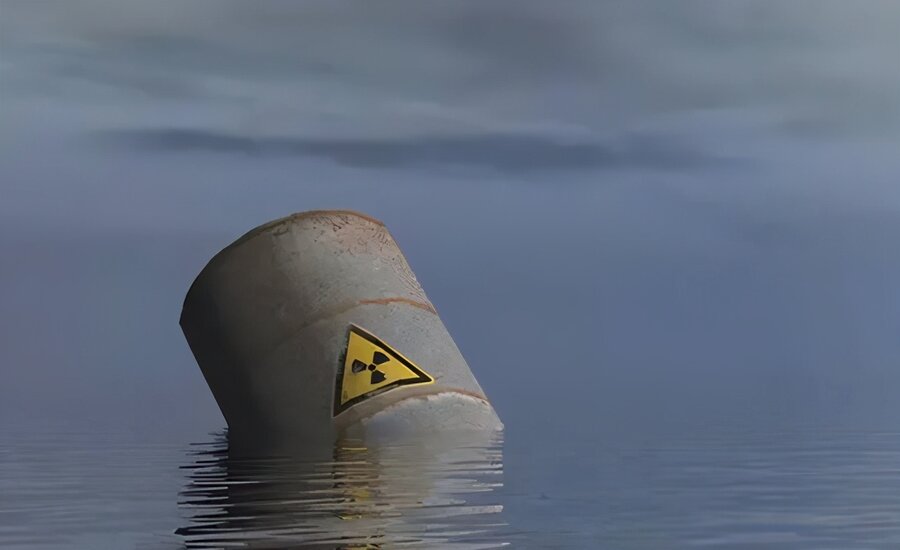In 2011, the earthquake and tsunami affected the Fukushima Daiichi nuclear power plant 1 to 3 reactor core meltdown. Since the accident, TEPCO has continued to inject water into the containment vessels of Units 1 to 3 to cool the reactor cores and recover contaminated water, and as of March 2021, 1.25 million tons of contaminated water has been stored, with 140 tons being added every day.
On April 9, 2021, the Japanese government basically decided to discharge nuclear sewage from the Fukushima Daiichi nuclear power plant into the sea. On April 13, the Japanese government held a relevant cabinet meeting and formally decided: Millions of tons of nuclear sewage from the Fukushima First nuclear power plant will be filtered and diluted into the sea and discharged after 2023. Japanese scholars have pointed out that the sea around Fukushima is not only a fishing ground for local fishermen to survive, but also a part of the Pacific Ocean and even the global ocean. The discharge of nuclear sewage into the sea will affect the global fish migration, ocean fisheries, human health, ecological security and other aspects, so this issue is not only a domestic issue in Japan, but an international issue involving the global Marine ecology and environmental security.
On July 4, 2023, the International Atomic Energy Agency announced on its official website that the agency believes that Japan’s nuclear contaminated water discharge plan meets international safety standards. On July 7, Japan’s Atomic Energy Regulation Authority issued the “acceptance certificate” of the Fukushima First nuclear Power Plant’s contaminated water drainage facilities to Tokyo Electric Power Company. On August 9, the Permanent Mission of China to the United Nations and Other International Organizations in Vienna published on its website the Working Paper on the Disposal of Nuclear-Contaminated Water from the Fukushima Daiichi Nuclear Power Plant Accident in Japan (submitted to the First Preparatory Session of the Eleventh Review Conference of the Treaty on the Non-Proliferation of Nuclear Weapons).
At 13:00 on August 24, 2023, Japan’s Fukushima Daiichi nuclear power plant started to discharge nuclear contaminated water into the sea
Hazards of nuclear wastewater discharge into the sea:
1.Radioactive contamination
Nuclear wastewater contains radioactive materials, such as radioisotopes, including tritium, strontium, cobalt and iodine. These radioactive materials are radioactive and can cause harm to Marine life and ecosystems. They can enter the food chain through ingestion or direct absorption by Marine organisms, ultimately affecting human intake through seafood.
2. Ecosystem Impacts
The ocean is a complex ecosystem, with many biological populations and ecological processes dependent on each other. The discharge of nuclear wastewater could disrupt the balance of Marine ecosystems. The release of radioactive materials may lead to mutations, deformities and impaired reproduction of Marine life. They may also harm important ecosystem components such as coral reefs, seagrass beds, Marine plants and microorganisms, which in turn affect the health and stability of the entire Marine ecosystem.
3. Food chain transmission
Radioactive materials in nuclear wastewater can enter Marine organisms and then pass through the food chain to other organisms. This can lead to the gradual accumulation of radioactive material in the food chain, ultimately affecting the health of top predators, including fish, Marine mammals and birds. Humans may ingest these radioactive substances through the consumption of contaminated seafood, posing a potential health risk.
4. Spread of pollution
After nuclear wastewater is discharged into the ocean, radioactive materials may spread to a wider area of the ocean with ocean currents. This leaves more Marine ecosystems and human communities potentially affected by radioactive contamination, especially in areas adjacent to nuclear power plants or discharge sites. This spread of pollution can cross national borders and become an international environmental and security problem.
5. Health risks
Radioactive substances in nuclear wastewater pose potential risks to human health. Ingestion or contact with radioactive materials can lead to radiation exposure and related health problems such as cancer, genetic damage and reproductive problems. Although emissions may be strictly controlled, long-term and cumulative radiation exposure can pose potential health risks to humans.
Japan’s actions directly affect the environment for human survival and the future of our children. This irresponsible and reckless act will be condemned by all governments. By now, a large number of countries and regions have begun to ban imports of Japanese goods, and Japan has pushed itself over the cliff. The author of the earth’s cancer – Japan.
Post time: Aug-26-2023





